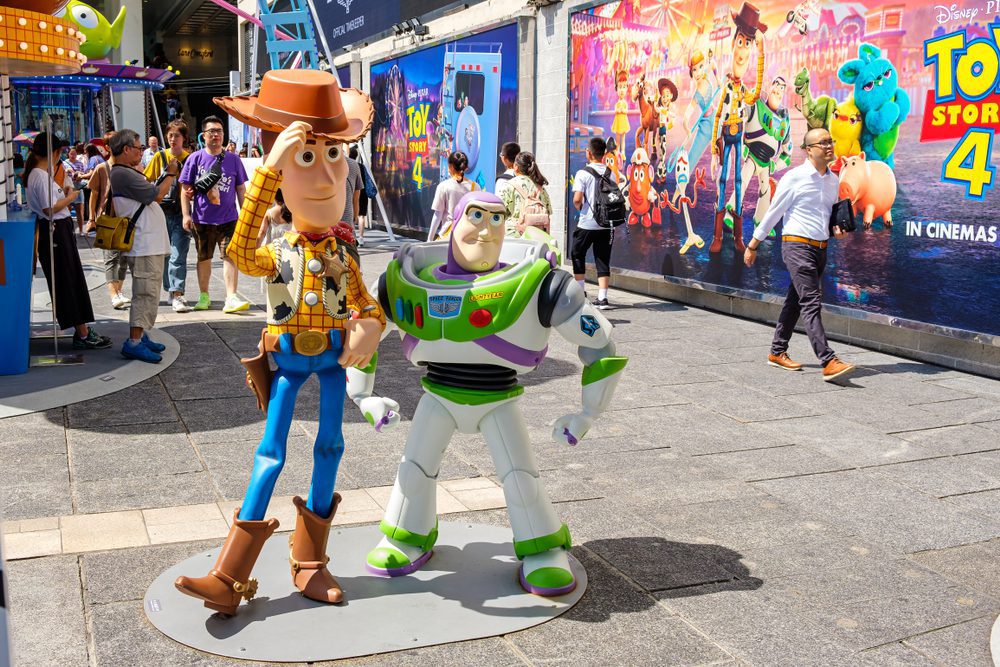Disney’s Streaming Success May Rest with Sequels as Subscriber Numbers Dip

For Disney, a bit of subscriber churn shows up in the numbers.
But there’s no looming derailment of the long-term economic model. Provided that the plan to cut content costs and cross-sell blockbusters (and sequels down the line) plays out.
To that end, and as noted our Disney earnings coverage Wednesday (Feb.8), the goal’s been reiterated by management that the streaming business will be profitable by the time the current fiscal year comes to an end in October.
Disney+ has been around for three years, and for the first time, there’s been a drop in subscribers. The 161 million subscribers represents a 1% decline from 164.2 million in October, the earnings release shows. That churn came internationally, and though there was growth in the U.S. and Canada, growth is slowing.
The average revenue per monthly paid subscriber came to $5.95 for Disney+ in the latest quarter, which had been $6.10 in October. We note that a bump in a few pennies would, speaking in terms of pure arithmetic, offset the slight subscriber bumps.
Disney, for its part, has said in the past (notably, from comments made by previous CEO Bob Chapek) that churn has not been impacted by price increases.
(One “subscriber” of sorts who is not unplugging: Norman Peltz, the activist investor, has ended his proxy fight as the company tackles its restructuring efforts.)
Consumers Eyeing Costs
But the pressure on digital media as a whole (not just on Disney) is there. As PYMNTS data shows, a declining percentage of consumers have been subscribed to digital media since the dark days of the pandemic, from a high of 27% in the fall of 2021 to about 21.8% headed into the end of the year. And more than a third of consumers, in the aggregate, would cancel subscriptions due to a desire to reduce expenses.
But more recently, we found that 55% of respondents stated that they would cancel streaming subscriptions if they needed to reduce the bills they received each month. And just 17% of subscribers would pay bills from streaming subscription services in full even where their budgets are stretched, implying that a majority would not do so.
The metrics, then, bear watching for Disney and for everyone else.
Disney CEO Robert Iger noted the shift that’s inherent as streaming changes the way we choose and consume content.
During the Feb. 8 conference call, he said that “the impact of technology is basically creating a huge authority shift from the producer and the distributor to the consumer … when you think about what streaming is, and we talked about this a lot as it related to multichannel TV, it is the ultimate a la carte proposition for the consumer. It gives the consumer so much more authority than they ever had before. Because in reality, it gives them the ability to watch programs, not channels, not even bundles when you think about it.”
As Iger also noted on the call, “because you’re signing up in most cases for a one-month subscription, you can sign up for one program, pay a relatively small amount of money and then end up basically unsubscribing. That’s a tremendous change.”
In the meantime, producing the content to make that “a la carte” proposition enticing is expensive. The company’s supplemental information shows that programming and production costs in the most recent quarter were $4.2 billion, up from $3.7 billion in October. And, as Iger signaled, taking a “really hard look at the cost for everything we make” and the “volume of what we make” may push more content to be shared between traditional businesses and streaming platforms.
For Disney, then, as with any other provider, among the best ways to combat the vagaries of churn will be to give them the programs they want.
And here is where Disney gets to enjoy the fruits of its labors: The “Toy Stories” of the world, “Frozen” (where sequels loom) and the library acquired from 21st Century Fox — already in the hopper and at the ready — which can keep the subscribers who are in place clicking and watching.
One point of note: ESPN is being broken out of what had been the shared reporting structure of the company, and Iger pointed to a future where ESPN would “pivot” away from the linear business. And, as he added, addressing the long-standing speculation of a spin-off: “We’re not engaged in any conversations right now or considering a spin-off.”
